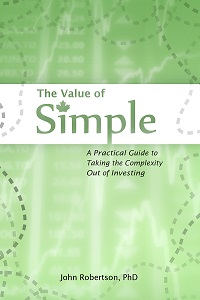Liquidity
April 30th, 2009 by PotatoCash held beyond simple transactional needs exists solely to deal with fear.
That’s a very loose paraphrasing of John Hempton’s point in a recent post on banks hoarding cash.
Liquidity can be a very important thing, especially if you have to sell something in a hurry (whether that’s due to an emergency in your life, or a margin call). A lack of liquidity is a risk factor, whether individually or in a business. Recently I talked about investing in individual companies and some of the tools to research how to do that. I also mentioned something about efficient markets — the idea that there is a pool of well-informed investors out there buying and selling the same companies you want to buy and sell, so the market price should closely reflect the market’s assessment of the company’s value. That leads down the deductive path to the conclusion that you can’t beat the market, so the best thing to do is focus on reducing your costs when investing.
Now, like I said, I think that indexing is a great idea and is probably the best way to get investing in the stock market. A large portion of my investments are indexed (with TD’s e-series index funds), and that’s also the part of my portfolio where my new savings are going every month. Nonetheless, I try to beat the market with the half of my savings that are not indexed, which are invested in individual companies. Generally, I don’t bother trying to do this with large-cap blue chip stocks: while they are great investments, they’re followed by a lot of people, so I don’t think that’s an arena where I can get a leg up (sure, looking at the charts, especially in these volatile times, it looks like there are some inefficiencies to exploit, but I’m not sure I’m the one to pick them out). Plus, that’s largely what the indexes are made up of.
Instead, I tend to gravitate toward smaller stocks that are ignored. One of the reasons many of these are ignored is that they aren’t liquid enough. That is, there aren’t enough shares traded every day for a large investor to safely get in. If a large investor decided that to make following a company worthwhile they might need to buy say 10,000 shares, but if only 5,000 are generally traded each day then their actions could drastically affect the market. If they had to sell in a hurry for whatever reason, they might have to accept a much lower price for their shares to find the extra buyers. They could be trapped by the lack of liquidity, so they will often ignore smaller, thinly traded companies. Since a lack of liquidity adds to the risk, these companies should trade at a discount to reflect the additional risk. Extra risk (and inefficiency) can also come into play from the actions of insiders, who typically represent a larger portion of the overall float when dealing with small- and mid-caps.
Since I’m pretty much the smallest of the small investors, there are very few companies where the volume of shares I’d be dealing with would affect the daily volume, so I’m more willing to accept liquidity risk.
Of course, “very few” is not zero, as I found out with one particular company when liquidity dried up — it would go weeks without a single trade, and the bid/ask spread was over 100% (e.g.: bid $1.50, ask $3.50) [the company was later delisted, but not before I managed to bail with an impressive loss]. So it is important to be aware of the liquidity situation before you invest in something — not just stocks, but also some mutual funds can restrict your ability to bail (though usually with just a back-end fee if you don’t hold for some minimum period).
Liquidity, or rather lack thereof, is in fact a part of what triggered the collapse of the market last year. Asset-backed commercial paper (ABCP) was all over the news this time last year, and it wasn’t necessarily that all those bundled mortgages to people in torn vests were worthless (though they were almost certainly overvalued by a not-insignificant percentage), but rather that the market seized up: faced with uncertainty (and an inability to leverage) nobody wanted to buy any more, and those that had to sell were forced to accept very low bids. In times of stress and fear, liquidity (different from “liquid courage”, coincidentally also sought out in times of stress and fear) can become very important, and very valuable. This also helps to explain why earlier in the year banks were seemingly driving away their line of credit customers with a stick.



 Questrade: ETFs are free to trade, and if you sign up with my link you'll get $50 cash back (must fund your account with at least $250 within 90 days).
Questrade: ETFs are free to trade, and if you sign up with my link you'll get $50 cash back (must fund your account with at least $250 within 90 days).  Passiv is a tool that can connect to your Questrade account and make it easier to track and rebalance your portfolio, including sending you an email reminder when new cash arrives and is ready to be invested.
Passiv is a tool that can connect to your Questrade account and make it easier to track and rebalance your portfolio, including sending you an email reminder when new cash arrives and is ready to be invested.